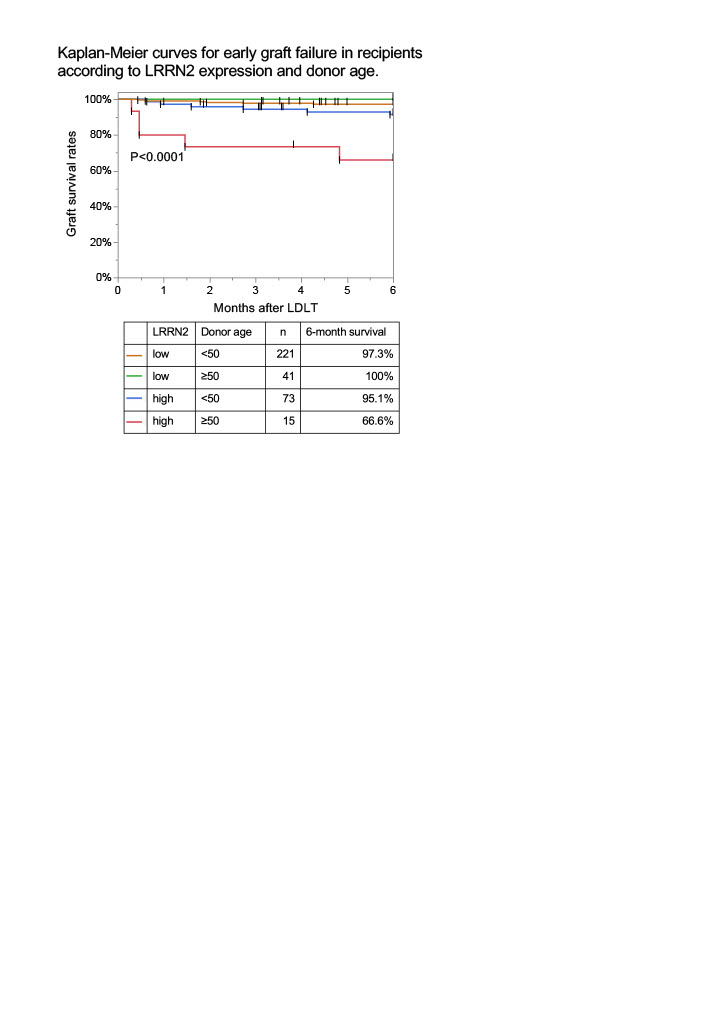Takahiro Tomiyama, Japan has been granted the TTS-JST Basic and Translational Mentee-Mentor Award
Up-regulated LRRN2 expression is effective as a marker for graft quality in living donor liver transplantation
Takahiro Tomiyama1, Tomoharu Yoshizumi1, Shinji Itoh1, Takeo Toshima1, Shohei Yoshiya1, Yuki Bekki1, Takuma Izumi1, Norifumi Iseda1, Katsuya Toshida1.
1Surgery and Science, Kyushu University, Fukuoka, Japan
Background & Aims: The quality and quantity of liver grafts are critical factors that influence living donor liver transplantation (LDLT) function and safety. However, the biomarkers used for predicting graft quality are not well known. Only donor age has been used as graft quality marker, ant the mechanism of increased donor age and deteriorated graft function is not well understood. In rodent, several functional and genetic changes reportedly occur in the liver with aging. However, there are some problems that short-lived rodents cannot adequately reproduce human aging. Non-human primates are considered one of the best preclinical models due to their genetic, physiological, and anatomical similarity to humans compared to rodents. In this study, we sought to identify unique graft quality markers, aside from donor age, by utilizing the livers of non-human primates.
Approach & Results: Hepatic gene microarray analysis was performed with liver tissue of young (5-9 years old) and elderly (26-27 years old) cynomolgus macaques. To examine the age- related change, we conducted principal component analysis and observed clear segregation between young and elderly groups, suggesting the age-related changes in gene expression were clearly captured. In addition, this analysis revealed that a total of 271 gene expression significantly upregulated in the elderly. These candidate genes were then narrowed down to six through bioinformatics analyses. The expression patterns of these candidate genes in human donor liver tissues were subsequently examined. We found that grafts with up-regulated expression of these six candidate genes were associated with an increased incidence of liver graft failure. Multivariate analysis further revealed that up-regulated expression of LRRN2 expression in donor liver tissue [Odds ratio (OR) 4.50, confidence interval (CI) 2.08–9.72, p = 0.0003), donor-age (≥50 ) (OR 3.62, CI 1.49-8.83, p = 0.0046), graft volume (OR: 2.73, CI 1.26-5.91, p = 0.0108), MELD score (≥20) (OR 4.7, CI 2.05-10.8, p = 0.0002), without splenectomy (OR: 9.43, CI 2.05-10.8, p < 0.0001) served as an independent risk factor for graft failure. Stratification based on graft expression of LRRN2 and donor age was also significantly associated with 6-month graft survival rates [LRRN2 low/donor age < 50 years; 97.3% LRRN2 low/donor age ≥ 50 years; 100%, LRRN2 high/donor age < 50 years; 95.1%and LRRN2 high/donor age ≥ 50 years; 66.6%, p-value < 0.0001].
Conclusions: Upregulated LRRN2 expression of liver graft is significantly associated with graft failure in LDLT. In addition, combination of graft LRRN2 expression and donor age may represent a promising marker for predicting LDLT graft quality.

[1] living donor liver transplantation
[2] graft quality
[3] small-for-size-graft syndrome
